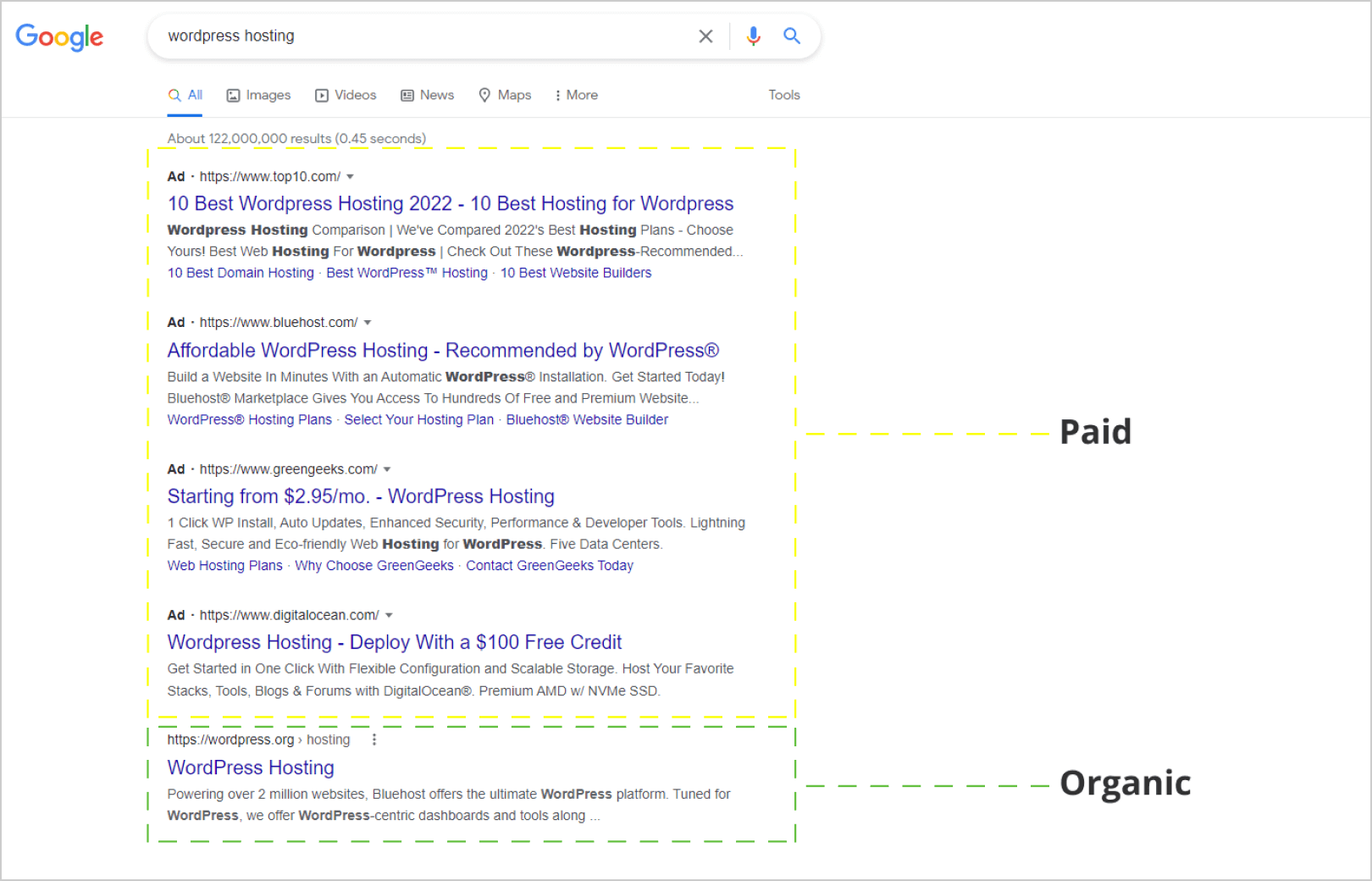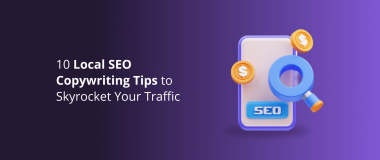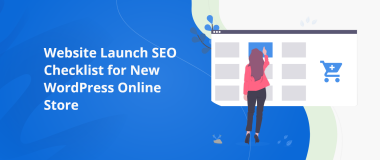SEO has never been more important. If your business doesn’t show up in a relevant Google search, for customers, it may as well not exist. People explore the internet through search engines and to stay on their radar, companies should build a robust search engine optimization (SEO) strategy.
However, despite acknowledging the fact that SEO is crucial to one’s online existence and overall success, businesses are still making some basic mistakes that may cost them real paying customers. These usually come from the fact that people misunderstand how does Google search work and why you need SEO for your business.
In this article, we provide some facts about SEO that can help you understand what it is, what search engines are looking for, and how to improve your online presence.
What Does a Search Engine Do, and What Is SEO?
Simply put, SEO includes all the methods and techniques that you adopt in order to increase the visibility of your website and its content in search engine results pages (also known as SERPs). There are typically two main methods to optimize your website – on-page and off-page SEO.
On-page SEO is all about technical practices that go behind the scenes like the URL of the page, using appropriate tags, headings, subheadings, the use of keywords, multimedia, and more.
Off-page SEO techniques are more promotional in nature, and you can use them to increase the site’s visibility. Examples include social media marketing, link building, etc. By visibility, we mean how high or low your website appears in SERPs for particular sets of keywords.
Note: In this post, we focus on organic search results and not paid ones. However, paid search is also an important part of SEO. Take a look at the screenshot below, we have highlighted the organic and paid searches for you. See how the paid links occupy the first positions? That’s why you should consider PPCs for your marketing strategy.

Why You Need SEO for Your Business?
The main purpose of any website is to attract as many visitors as possible.
Now, when it comes to traffic driven by the search engines, the figures are simply overwhelming – and probably the clearest indicator of how important SEO is and why we need it.
According to research, almost 29% of the traffic on a website is driven by search engines. If you were thinking social, know that only 2.5% comes from social media outlets and 0.5% from paid searches.

There are many search engines and some of you might be wondering, which one to target first? According to the data, it should be Google. The company accounts for 92.04% of all the global organic search traffic, with Bing, Baidu, Yahoo!, YANDEX, and DuckDuckGo sharing the remaining less than 8%. Google’s advantage is quite a big number and clearly an indicator of where we should focus our attention.
What Are Search Engines Looking For?

- Relevancy
- Quality of content
- User experience
- Speed
- Compatibility
- Internal linking
- Backlinks
- Meta descriptions
- Schema markup
- Image tagging
- Evergreen content
- Fresh content
- Pillar pages
- YouTube descriptions
- Long-tail keywords in title tags
- Unique content ideas

So let’s have a look at what search engines are looking for and how you can deliver.
1. Relevancy
Search engines are becoming smarter, and they try to provide the most updated and relevant information to their users. Whether it’s a simple question or a more complex query, search engines will always try to filter the best information out there that matches the user’s intent.
Search engines look for information based on a unique algorithm using natural language processing to understand what the person means and then correlate the detected entities and sentiment to their database and the Knowledgebase. Although they are far from perfect, they are constantly improving and growing more accurately with every update.
Having said that, being relevant to your target audience can really go a long way in terms of attracting organic traffic. That’s why, you should research what your audience is looking for and why, and try to match their requirements with your website content.
2. Quality of Content
If content is king, then quality is the army. A king with a weak army is vulnerable while a strong army strengthens the king’s reign. Engaging and interesting content that provides value will encourage visitors to spend more time on your website and may improve conversions. It affects the overall user experience and that’s really important to search engines.
Google has developed a newfound love for the quality of the content over the years, and it’s now even a ranking factor.
One way of creating quality content is to write for your audience and not for the search engines. You should also follow Google’s EAT regulations to make sure that your pages live up to the search engine’s standards and have a chance to rank well in the SERPs.
3. User Experience
User experience, in short, is how a visitor actually feels when they are on your website. The overall site design, color combination, navigation, website speed, and content contribute to the user experience.
Some of the signals that show search engines that you are not delivering on this front are high bounce rate, and low dwell time. This means that in order to be relevant in search, your website should be able not only to attract customers, but to keep them engaged.

4. Speed
Website speed wasn’t so important a few years back but with the core webs vitals update, how fast your website loads can be a deciding factor in terms of SEO.
The time it takes a page to load and become interactive is a major determinant of user experience. And since nowadays, there is always an alternative, Google has decided to prioritize faster and better-optimized pages in the SERPs. This doesn’t mean that slow-loading websites will not rank. However, if Google identifies two similar pages that match the user’s query and intent, the algorithm will display the one with better Core Web Vitals first.
5. Compatibility
Most people in the world nowadays browse the internet from their mobile phones. In fact, 59.32% of all traffic is from small screen devices.
That’s why, in the past several years, Google has been working on mobile-first indexing, and now it is the norm for all searches. This means that the search engine’s bots are crawling and displaying in the SERPs only the mobile versions of websites.
Websites look differently on a mobile phone, tablet, or desktop, and to provide the same top-notch experience, companies should optimize their properties to render equally well on all screen shapes and sizes. The best way to do this is to implement a responsive design and enable the page to automatically change depending on the screen it is viewed on.
6. Internal Linking
Internal link building is one of the most useful SEO techniques out there and probably the most overlooked as well. Here is what it can do for your website:
- Help readers find more relevant content.
- Helps bots understand what the text is about.
- Helps bots understand the connections between pages.
- Help with bots index the pages better.
When search engines understand your pages’ content better, the algorithm is prone to show it in more relevant searches. This may, ultimately, reduce bounce time, increase dwell time, and even boost conversions. All of these serve as additional positive signals to search engines.
7. Backlinks
Backlinks are generally accepted as the most important ranking factor for Google. The idea is that links for high-authority domains show that your content is relevant and of top-quality. For example, if Harvard or NASA link to your page there’s no higher recognition than this.
Algorithms, as advanced as they are nowadays, are not capable of completely understanding what may be of value to humans and what is irrelevant. That’s why they use backlinks as a form of recommendations from other humans. If a website has many links from high authority websites, their own authority grows.
Just to make it clear, an authority website is a trusted name on the market. It has already been recognized as a leader in the niche. You can additionally boost your website’s authority by creating thought-leadership content, and working on your online reputation.
8. Meta Descriptions
Meta description may not help a great deal with SEO, however, it makes your content more identifiable and searchable. In case you are wondering what meta descriptions are, it’s a small paragraph that appears under the page URL. Users often read this paragraph before opening the link. There is a 156 characters limit set for this description.
Even if you don’t manually create these, there is a high chance that Google will automatically generate them for you, by extracting text from the content.
However, it’s best to write them yourself, so you can optimize them with the proper keywords. This may boost the visibility of your content in search and make it easier on both users and bots to find out what your content is about.
9. Schema Markup
Schema markup is really important for SEO, because it provides another way to help Google understand and index your content. By providing structured data describing the nature of the information, the goals, the format, etc., the bots are more likely to understand your page properly and show it in relevant searches.
They may be able to do it either way, however, if you take control over the process, you reduce the possibility of mistakes.
Furthermore, structured data makes your content eligible to show up in rich results. It makes the link’s appearance more attractive in search with the help of rich media, ratings, product details, and more.
This type of search results are more compelling and people are more likely to click on them.
10. Image Tagging
While Google is actively working on improving the way they crawl and understand images, the algorithm still has a long way to go. That’s why the information you provide to tag and describe your images is really important.
The “alt text” is what we are talking about. It is a short summary of the picture which helps search engines identify it. You can also use your main keywords in alt text but don’t overdo this.
Image tagging also helps when making your visual content more identifiable in a Google image search. And with the number of visual searches growing exponentially, by optimizing your images, you improve your chances of making the cut, and driving more traffic to your website.
11. Evergreen Content
Evergreen content is usually not time-barred. It will be useful no matter when it is read. Yes, it is something hard to create as it takes time. However, the long-term benefits of such content are amazing and Google loves it too.
Evergreen content brings regular traffic to your website and shows search engines that you provide value. Furthermore, if you update it regularly, by adding fresh info, more recent research, new links, and so on, it remains even more relevant over time.
12. Fresh Content
Aside from evergreen content, Google is always looking for fresh content on current topics. This used to be important mostly to digital publishers that want to rank in Google News and Top Stories. However, after recent updates, news-worthy information from all websites is eligible to show in News, if it matches the user’s interests.
Covering interesting updates regarding your industry and niche may help you rank in the search engine’s news platforms and reach a new audience. Especially if you are quick to respond to the event and showcase a unique and relevant point of view.
Google values independent journalism and wants to show different points of view, so even small websites have a chance to shine if they produce value.
13. Pillar Pages
Pillar pages are a great way to organize your content into topics that are relevant to your customers. A pillar page groups multiple other pages that explore the information from different angles, and cover relevant subtopics.
This type of information hubs show Google that you have deep knowledge of the topic and that you are able to provide your user with an exhaustive explanation. Expertise is an important EAT factor, and pillar pages are one of the ways of showing it.
14. YouTube Descriptions
YouTube videos often make their way to the first page of Google. They have big potential – so, if you don’t already have a channel, make one, and start creating videos the right way.
If you already have a channel, you can boost its performance as well as your website SEO, by transcribing your videos and converting them into articles.
This goes the other way around as well – there are multiple tools that enable you to turn your articles and podcasts into videos and reach a broader audience.
Repurposed content provides a richer experience and helps your business to improve it’s overall online presence.
15. Long-Tail Keywords in Title Tags
Using only one (single) keyword in the title is okay. However, you will be missing out on a lot of traffic. Use at least one, or ideally two long-tail keywords, in your article to give your ranking a boost.
Furthermore, you can use long-tail keywords in your H2 and H3 titles, to improve the content structure and make different sections more eligible to be discovered in search.
16. Unique Content Ideas
It’s tough to regularly come up with new content ideas consistent with your brand’s strategy. However, creating a substantial backlog and posting on schedule is good for maintaining your relevancy. Your customers will become used to expecting updates from you at certain days and hours, and are likely to look forward to those. If you manage to deliver, this will increase your website traffic over time.
You can look for fresh content ideas by using various SEO tools, performing keyword gap analysis, staying up to date with industry trends, and using your own data to create unique pieces.
Another, excellent source for keywords and topic ideas is Wikipedia. Use Google Keyword Planner in collaboration with Wikipedia and see the magic happen.
Search for a term on Wiki and pay close attention to the “Contents” box, sidebars, internal links, and the “See Also” section for out-of-the-box, unique ideas.
Bottom Line
The above list of techniques is not exhaustive as search engines are constantly changing, and it’s next to impossible to cover all they are looking for in a website. However, it does provide insights into the latest updates and shows why you need SEO for your business.
If you don’t have the time or skills to optimize your website to live up to these standards, make sure to hire an SEO specialist who can do all the deep digging and hard work for you.
![What Are Search Engines Looking For in 2022 [16 SEO Facts]](https://devrix.com/wp-content/uploads/2017/12/What-Are-Search-Engines-Looking-For-in-20221_-16-SEO-Facts-810x340.png)



